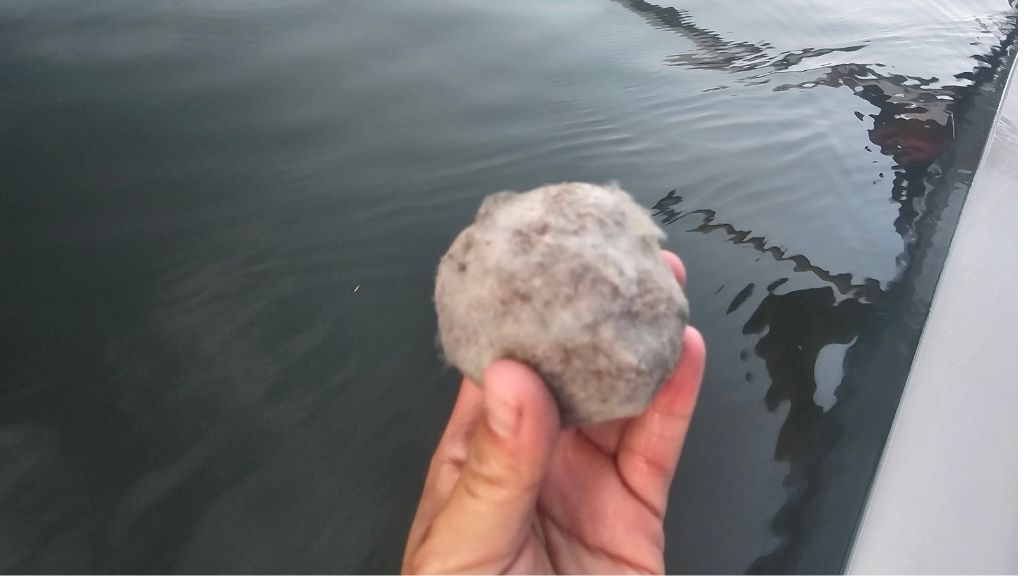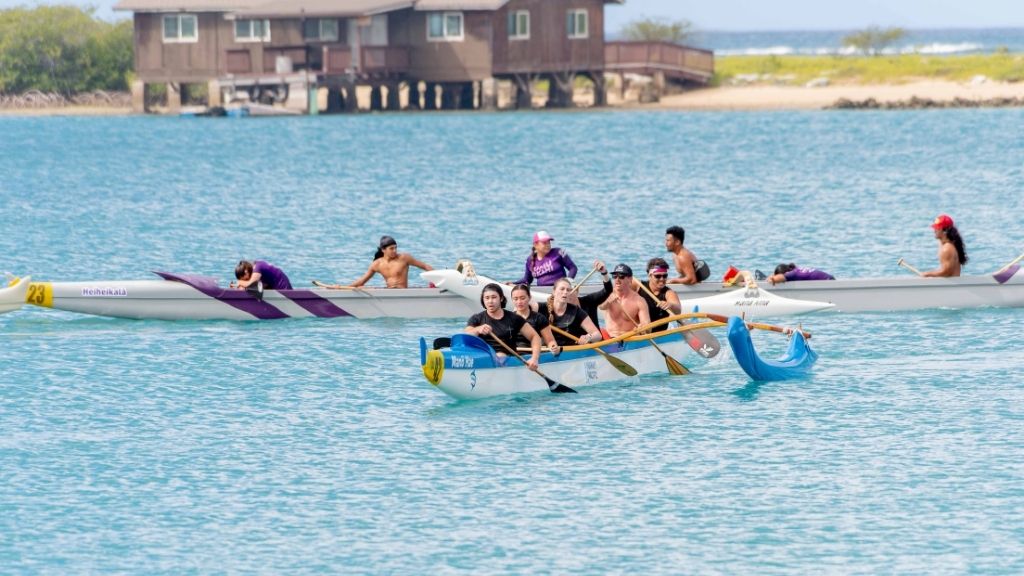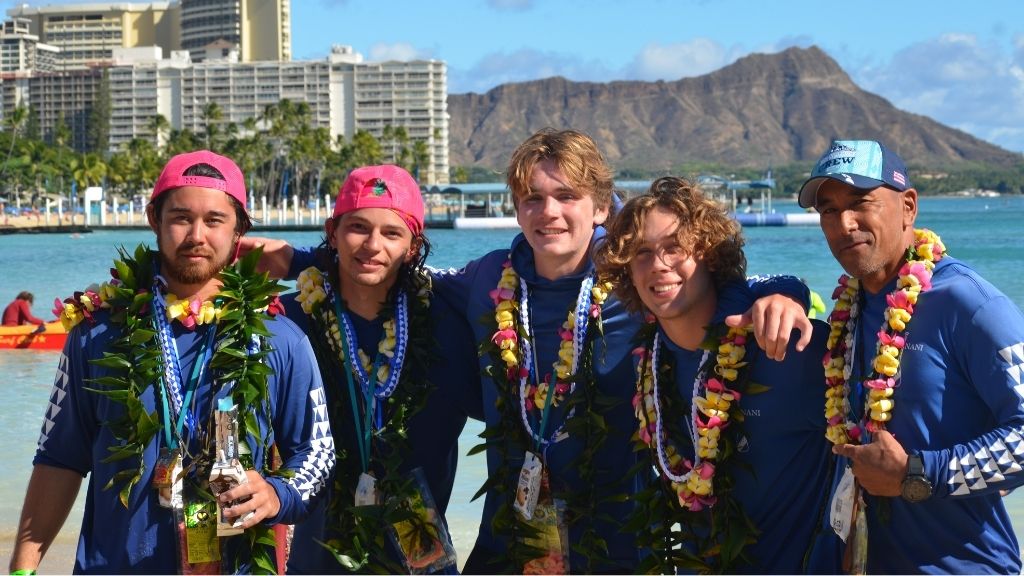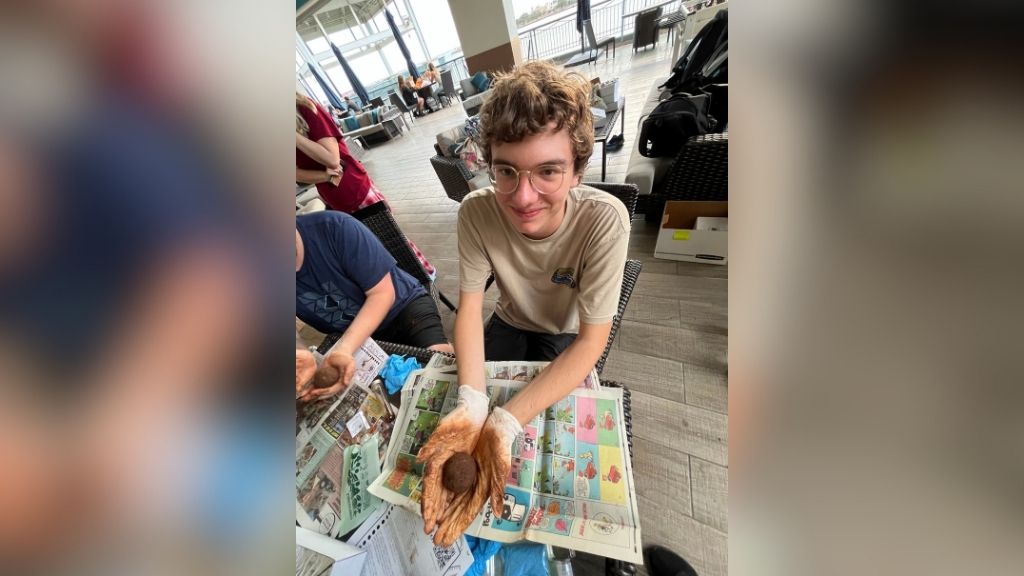Hawaiʻi Pacific University's Nā Manō ʻo Ke Kai, the school's official outrigger paddling club, is doing more than just paddling this spring. According to club president, Jonah Stokes, they're making waves in environmental stewardship.
Through a partnership with Kaimuki High School, the club has been actively engaged in creating and deploying Genki balls, an innovative, microbe-packed solution designed to combat the sludge that has accumulated at the bottom of the Ala Wai Canal in Honolulu, a stone's throw from HPU's campus.
"When the conditions are rough at Magic Island, we practice in the Ala Wai Canal," said Stokes. "A lot of people don't like it because of its condition. That's why we wanted to do something where we could see the immediate impact of our actions."
Cleaning the Ala Wai—One Genki Ball at a Time
The Ala Wai Canal has long suffered from pollution due to sewage spills, stormwater runoff, and stagnation. The problem dates back to a 2006 sewage disaster that introduced millions of waste materials into the waterway. Since then, despite numerous cleanup efforts, the canal has remained one of the most polluted bodies of water in Hawaiʻi.
Seeking an innovative way to combat this issue, Stokes and his teammates turned to Genki balls' small, biodegradable spheres made from a mixture of soil, rice bran, molasses, water, and beneficial microorganisms.
"We mix it all together until it reaches a consistency where it doesn't dry out too fast but isn't too soggy," Stokes described. "Then, we shape them into balls about the size of a tennis ball. But some people make theirs smaller, so they have more to throw in and some make one large ball."
After formed, the balls are then wrapped in newspaper or foil and left to ferment in a cool, dry place for three to four weeks. "You know they're ready when there's mold and fuzz growing on them," said Stokes. "That's when the bacteria inside are fully active and ready to start breaking down the sludge in the water.

Finished Genki ball.
Each Genki ball slowly releases the bacteria as it decomposes in the water, which then digests the impurities at the canal's bottom while simultaneously clarifying the surrounding water. Over time, repeated applications are expected to significantly reduce pollution levels, restoring the canal to a healthier state.
"We've already released 300 balls in our first semester alone," said Stokes. "It might not seem like a lot, but combined with the efforts of other groups, we are definitely seeing an improvement."
Impactful Partnerships Beyond the Water
The concept of Genki balls was first tested in Japan between 2003 and 2006, where they were successfully used to rehabilitate the heavily polluted Dōtonbori River. Inspired by this success, environmental organizations in Hawaiʻi have been tracking the progress of similar efforts in the Ala Wai Canal, working collaboratively with organizations like Nā Manō ʻo Ke Kai and Kaimuki High School to measure improvements in water quality.
The initiative has gained widespread attention across HPU's campus as various student organizations including Leaders of a Sustainable Future and the Hawaiian Advocacy Club have expressed interest in collaborating. Marine science students have also joined the effort, using the initiative as an opportunity to study real-world applications of their research.
"Some of the most common reasons that we hear from students for choosing HPU are both to be a part of an intimate campus atmosphere, as well as to immerse themselves off-campus in a rich cultural and physical landscape that is found nowhere else in the world," said Tian Robinson, Assistant Director of Student Engagement. "Our Registered Student Organizations such as Nā Manō ʻo Ke Kai, who bring students together to serve and give back to the community, are doing just that. We are incredibly proud of all of our RSOs who seek out such partnerships and service opportunities, as they are designing their own learning experiences that reflect our HPU values: to understand what it means to be Pono by taking action and supporting community-led solutions; to uphold their Kuleana by caring for the people and the land; and to represent HPU with Aloha in all circles."
Furthermore, Nā Manō ʻo Ke Kai's partnership has had a significant impact on Kaimuki High School's W.O.R.M.S. Club which coordinates the sale of the Genki ball kits for HPU.
"The funds from our partnership with KHS have allowed them to start their Strawberry Project, where students learn agricultural skills," Stokes explained. "They even developed a strawberry gummy product called Hidden Gems, which was recognized in the Young Entrepreneurs Contest. It's incredible to see how this project is creating change beyond just the Ala Wai."

Na Mano 'o Ke Kai members paddling in one the team's first preseason races, launching from Magic Island and finishing at Sand Island; photo by Jaret Love-Tabion.
A Club Rooted in Culture and Community
Nā Manō ʻo Ke Kai, meaning “The Sharks of the Ocean,” was founded in spring 2024 with the vision of expanding outrigger paddling opportunities at HPU while promoting ocean conservation and community engagement. Stokes, a lifelong paddler, saw potential in transforming an underutilized recreational activity into a structured organization that would bring students together for both sport and service.
"Our mission is to cultivate a vibrant community at HPU, perpetuating the rich historical art of outrigger paddling. We aim to provide a platform for students to embrace the art of canoeing, promoting teamwork, and an appreciation for the ocean while fostering inclusivity and engagement with the broader community," he said.
The club has grown rapidly, now consisting of over 60 members, ranging from active paddlers to volunteers dedicated to land stewardship and conservation efforts. "Whether you paddle or not, there's always a way to contribute," Stokes explained."We want everyone to feel like they have a place here, whether it’s through paddling, environmental initiatives, or cultural learning."
Additionally, Nā Manō ʻo Ke Kai is more than a student organization—it's a family. "I graduated from a school that instilled traditional Hawaiian values, and I saw an opportunity to bridge the gap between the local community and HPU. Our university has a diverse background of students, and I wanted to create an inclusive space that also respected and embraced Hawaiian culture," Stokes said.
"For students coming from different parts of the world, it's an opportunity to immerse themselves in Hawaiian traditions and to form lifelong friendships. We are here to support each other, both in and out of the canoe."
The Future of Nā Manō ʻo Ke Kai
Students interested in joining Nā Manō ʻo Ke Kai can participate in paddling sessions, Genki ball-making workshops, or community outreach events. The club welcomes all skill levels and backgrounds.
Beyond environmental restoration, Stokes envisions a broader future for the paddling club. "My long-term goal is to make outrigger canoeing a collegiate sport at HPU," he shared. "Right now, students who paddle in high school have to join expensive clubs if they want to continue after graduation. If we can create a formal program and maybe even collaborate with other schools, we could offer scholarships and opportunities that make the sport more accessible."
For now, the club remains committed to its dual mission of preserving traditional Hawaiian paddling and advocating for ocean health. As the Ala Wai Canal cleanup continues, Nā Manō ʻo Ke Kai will remain at the forefront of innovative environmental action—one Genki ball at a time.





